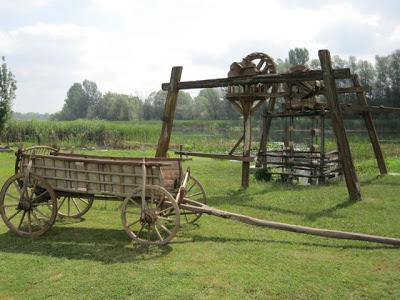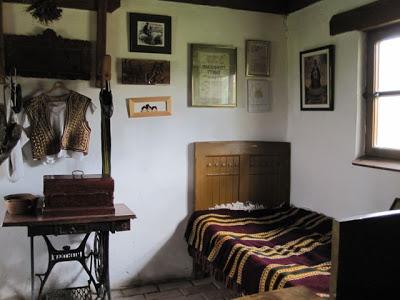
From this donkey comes the most expensive cheese in the world
When I visited the famous Serbian wildlife and nature reserves Zasavica one year ago while visiting Sremska Mitrovica (my post about it here) I didn't know that the world's most expensive cheese, made of donkey milk, is produced there!
Beside this interesting cheese story, Zasavica Park is indeed worth a visit. For all traveller who enter Serbia by the Zagreb-Beograd speedway Zasavica is on the road and makes a nice stop.

Mangulica Pig
Mangulica is the only surviving autochthonous Serbian breed of domesticated pig. Other two, Šiška and Šumadinka died out. A breed, also known as "woolen pig", due to its good qualities, is considered a "noble", but it almost died out in the 1980s.Its fat has up to 80% less cholesterol and triglycerides than a common, white pig. In 1998 Mangulica was introduced in Zasavica, and are left to roam free in the reservation.

Goats

Sheeps

Agriculture:
The concept for Zasavica Nature Park ist that Agriculture helps local farmers to gain income from the reserve and at the same time it is an essential tool for the management of specific habitats and species. Agriculture is restricted to grazing and hay making and famers are not allowed to use of pesticides, herbicides and chemical fertilizers. Preferably farmers use domestic cattle typical for the region like the Manguliza pig and Podolian cattle for grazing.

Cattles
Podolian-Cattle
In 1998 the cattle of the Podolian breed was introduced in Zasavica. First animals arrived in the spring of 1998 from Mionica, in western Serbia. Pasture "Valjevac", near the small Goransko-ribolovačko lake was chosen as their home. The pasture has an area of 3 square kilometers and today numbers 50 cattle. Breeding of Podolian cattle is being part of the program for the preservation of the animal species, developed by the Serbian Ministry of agriculture.






Biodiversity
In this habitat types and species (including meadows and pastures, open water, marshes, wet forest patches and upwelling water springs) of European and Serbian importance are settle here and live in a favorable conservation status.

Educational program for schoolchildren, educational work camps and research camps are being organized with the purpose of increasing the awareness and knowledge on value and importance of protecting the wetland in general and Zasavica wetland in particular.

Here the official Website of the Zasavica Nature Park
